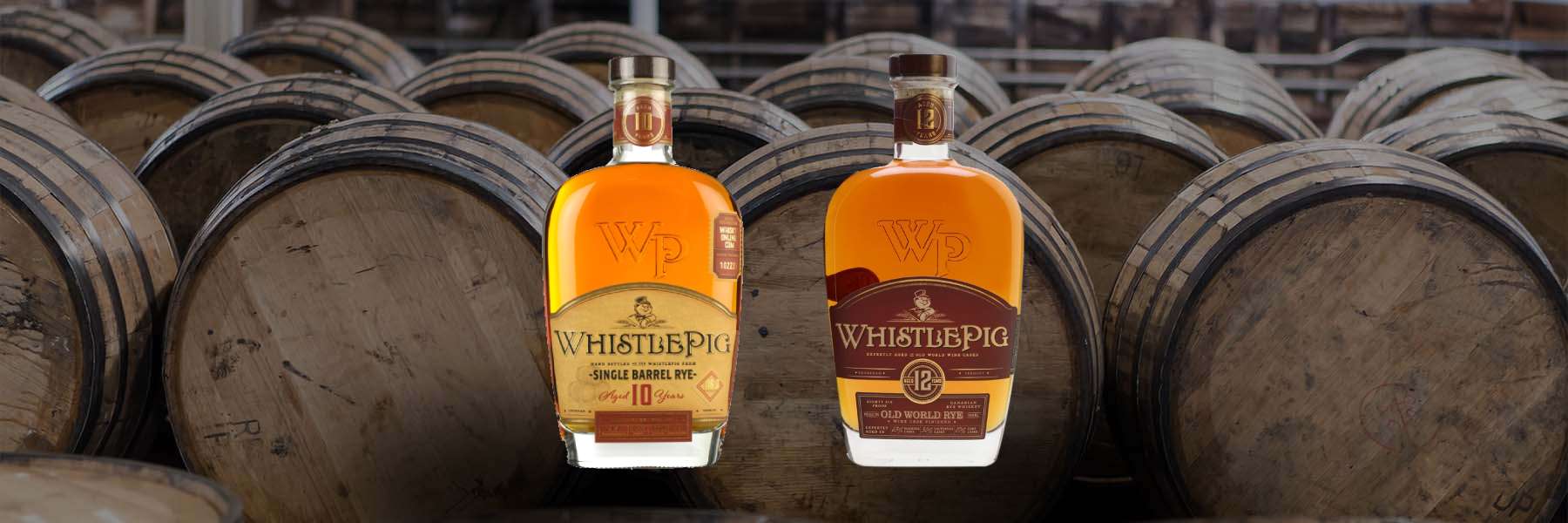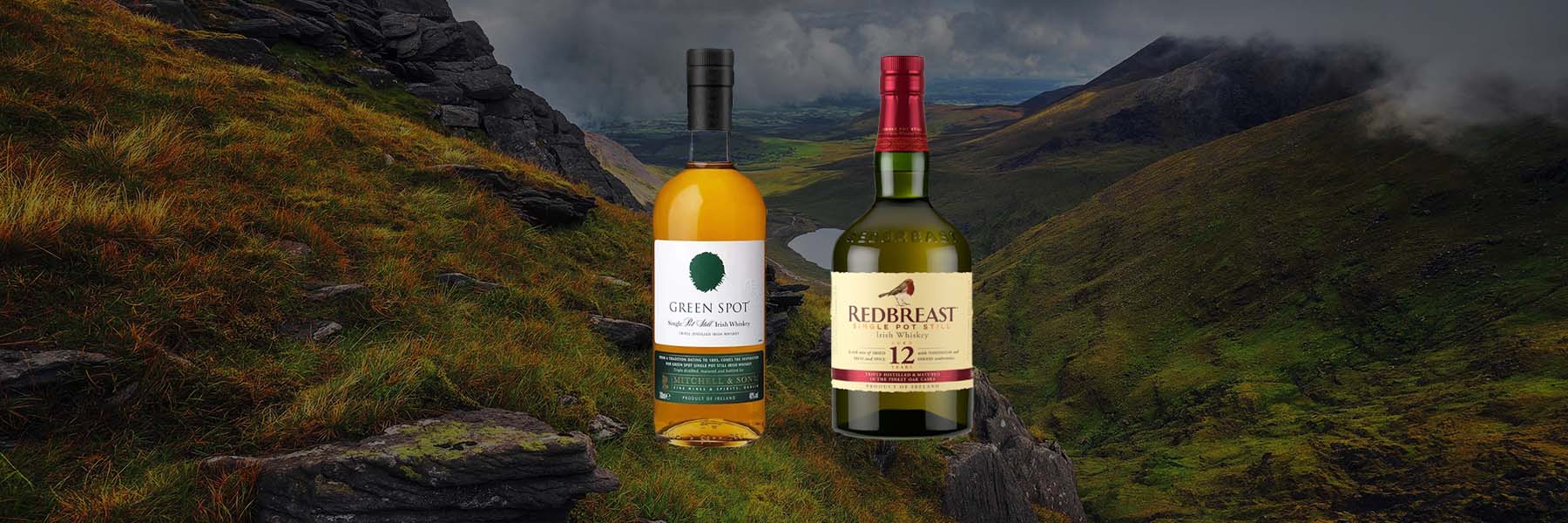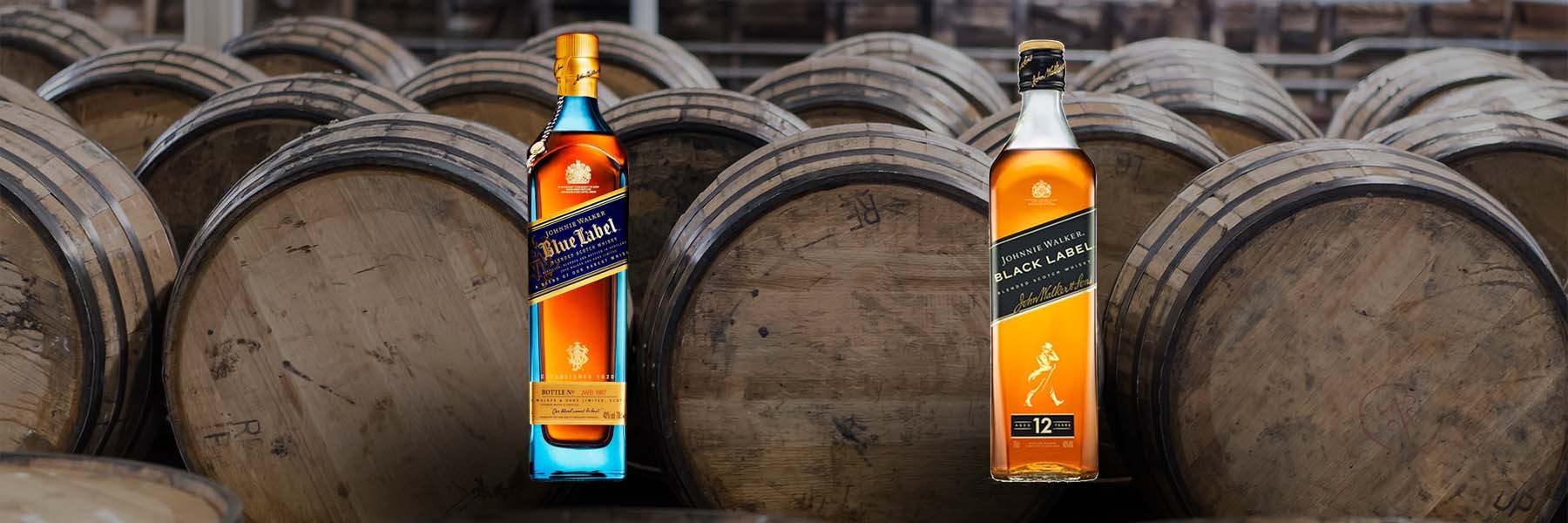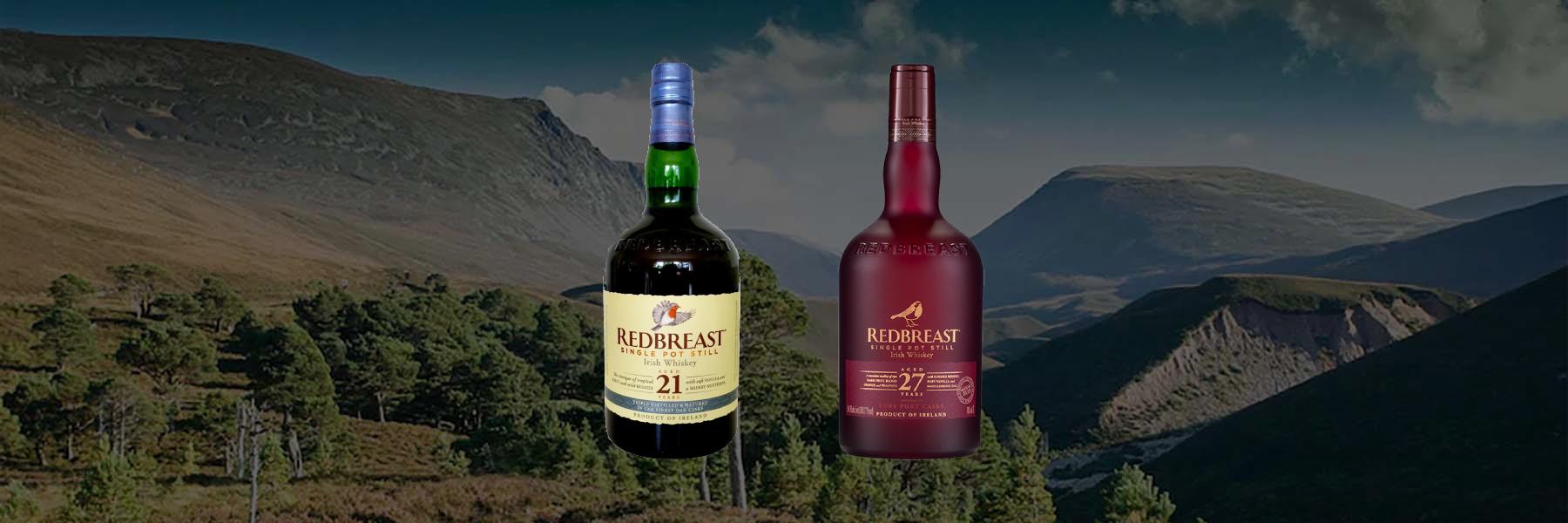WhistlePig 10 Year vs 12 Year: A Rye Dilemma
Tasting whiskey is always a personal journey that’s as much about the person as it is about the drink.
When I first came across WhistlePig 10 Year, it was at a friend’s gathering.
The amber liquid glinted in the dim light as I poured myself a small measure. It greeted me with a robust, spicy aroma, a prelude to the following warmth.
A, the rye was unmistakable, bold, and assertive, dancing across my palate with hints of caramel and vanilla. It was a drink that demanded attention, each sip unfolding more of its complex character.
Months later, I found myself with a glass of WhistlePig 12 Year. The setting was different: a quiet evening at home, the kind of night that invites contemplation.
The 12-year-old felt like a more mature conversation. There was an elegant, refined quality that spoke of its extra years of aging. The flavors were more nuanced, a sophisticated blend of fruit, oak, and spice that lingered long after each sip, leaving a gentle warmth and a trace of sweetness.
Both experiences were distinct, shaped by the whiskey and the moments they were part of. The 10 Year was a bold statement, a burst of flavor that ignited conversations and laughter. It was the kind of whiskey you remember long after the night, its assertive character reminiscent of good times and spirited discussions. On the other hand, the 12-year-old was comforting and familiar.
It didn’t demand the spotlight but offered a steady, comforting warmth, encouraging you to slow down and savor the moment.
As I think back on both experiences, I can’t help but reflect on what they say about my tastes and preferences.
But which do I prefer?
That’s a question that feels as complex as the whiskeys themselves.
The better question is, which whiskey would you choose for a moment worth remembering?
Would you opt for the bold and assertive 10 Year to enliven your gatherings, or would you prefer the refined and elegant 12 Year for a quiet evening of reflection?
WhistlePig 10 Year vs 12 Year: Quick-look Comparison
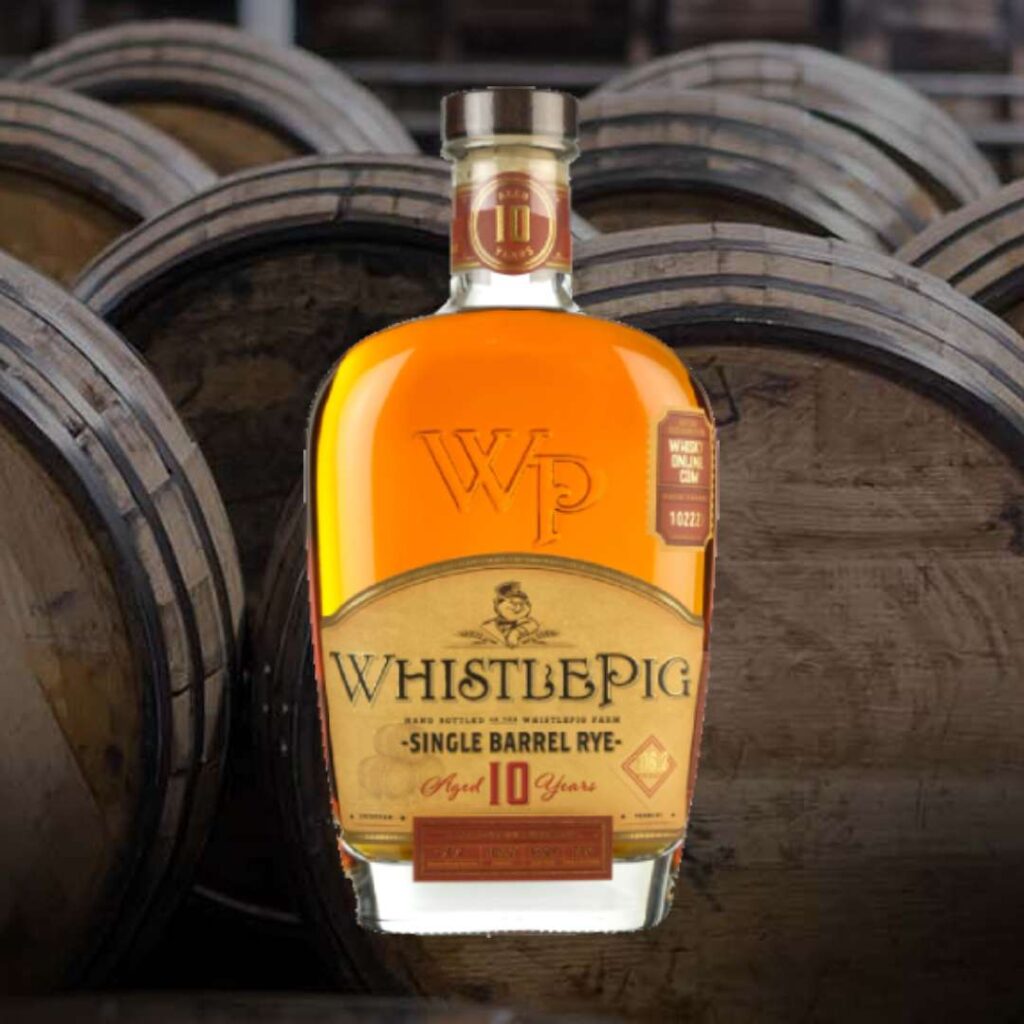
| WhistlePig 10-Year-Old | |
|---|---|
| Nose | Notes of caramel, vanilla, and a hint of spice. |
| Palate | Complex and well-balanced, rye spice, oak, and sweet toffee. |
| Mouthfeel | Smooth and creamy, medium to full body. |
| Finish | Long and warming, with lingering notes of cinnamon, oak, and a touch of pepper. |
| Age | 10 years |
| Cask/Barrels | New American oak barrels |
| Strength | 50% ABV/100 Proof |
| Price | £63.5/$81.00 |
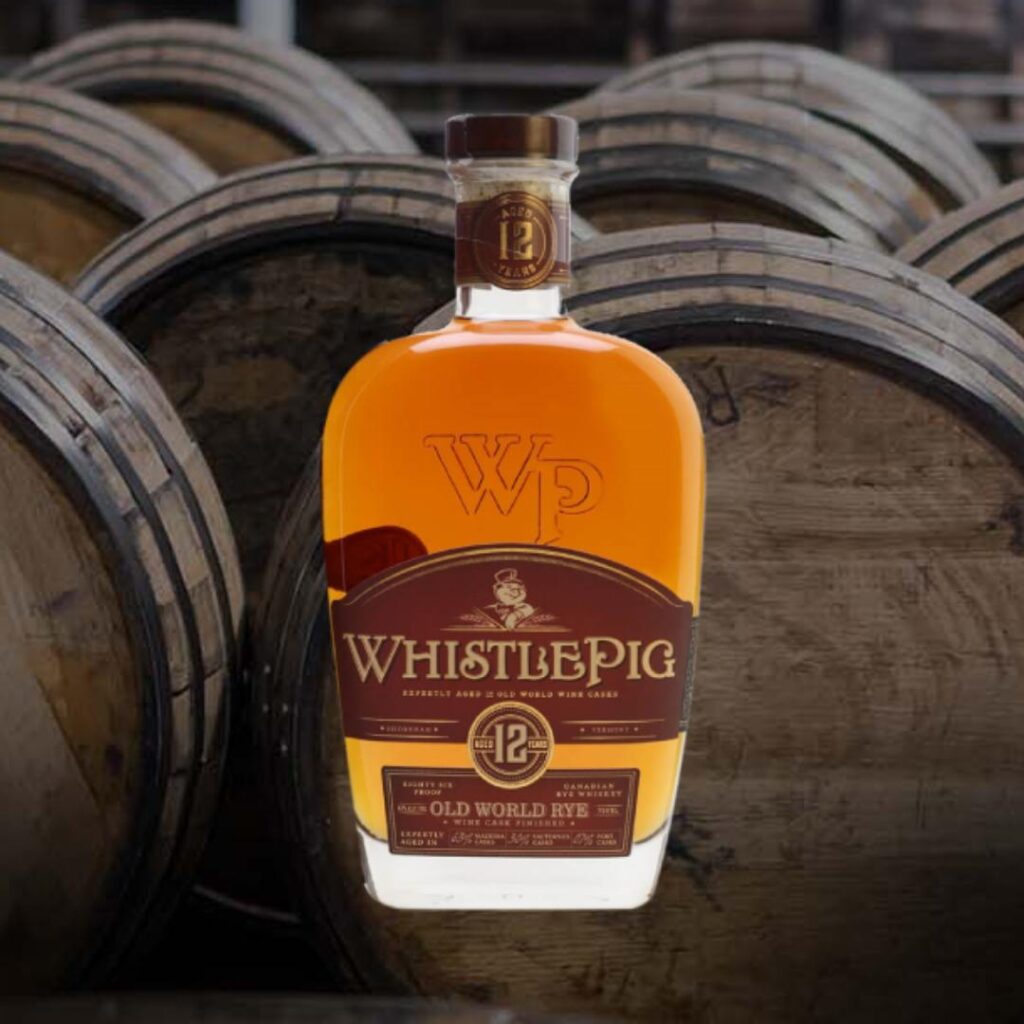
| WhistlePig 12-Year-Old | |
|---|---|
| Nose | Rich blend of dark fruits, caramel, chocolate, and rye spice. |
| Palate | Complex with dark cherry, vanilla, rye sharpness, oak, and leather. |
| Mouthfeel | Silky, full, and luxurious. |
| Finish | Long with vanilla, spice, and toasted oak. |
| Age | 12 Years |
| Cask/Barrels | New American oak and Old World wine casks |
| Strength | 43% ABV/86 Proof |
| Price | £116.00/$148.00 |
WhistlePig 10 Year vs 12 Year: Whistlepig 10 Year Review
Colour
When I first encountered WhistlePig 10 Year, its appearance was striking. My glass held a deep, rich, amber color, reminiscent of autumn leaves just as they turned their most vibrant.
It was clear and inviting, promising a depth of flavor that any whiskey enthusiast looks forward to exploring.
Nose or Aroma
As I brought the glass closer, the nose was immediately engaging. There was a bold rye spiciness upfront, accompanied by a sweet undertone of caramel and a hint of oak woodiness.
The aroma was robust and well-rounded, offering a complex bouquet that made me anticipate the first sip.
Mouthfeel
Upon tasting, the mouthfeel was one of the most distinctive aspects. It was surprisingly smooth for a rye, with a medium to full body that coated the palate pleasantly.
The warmth from the alcohol was present but not overpowering, allowing the flavors to unfold without a harsh burn.
Flavor or Palate
The flavor, or palate, of the WhistlePig 10 Year was where it truly shined.
The initial taste was a continuation of the nose, with a spicy rye kick that mellowed into a symphony of sweetness and complexity.
There were notes of vanilla and caramel, likely from its time in the barrel, which balanced the spiciness beautifully.
Hints of dried fruits and a subtle nuttiness emerged as it lingered on the tongue before finishing with an extended, warm, and slightly dry ending that left me ready for another sip.
It kind of reminds me of Bulleit Bourbon, which provides a similarly sophisticated and layered drinking experience, appealing to those who enjoy the robust and complex nature of aged rye whiskeys.
Finish
The finish of WhistlePig 10 Year is one of the most compelling aspects of the experience. After the flavors’ complexity and the mouthfeel’s smoothness, the finish leaves a lasting impression.
It’s long and warm, with the rye’s spiciness persisting pleasantly. As the initial burst of flavor gradually fades, there’s a subtle dryness and a lingering sweetness, a final reminder of the oak and vanilla notes that make this whiskey what it is. It’s the kind of finish that encourages contemplation. Each sips a little journey that ends with a satisfied sigh.
ABV (Alcohol per Volume)
At 50% alcohol by volume (ABV), WhistlePig 10 Year is undoubtedly robust. This higher proof contributes to the bold flavors and the warmth of the finish. It’s a whiskey that stands up well on its own, the strength of the alcohol balancing beautifully with the complexity of its flavors.
While the ABV might seem intimidating to some, it’s a vital part of what gives WhistlePig its character, making it a memorable and engaging sipper.
Price
Price-wise, at around $81 or £63.5, WhistlePig 10 Year is a premium point. Given the quality of the experience, the depth of flavor, and the overall craftsmanship, I find the price fair.
It’s not an everyday whiskey for most but a special occasion drink, something to savor and enjoy during moments that call for something extraordinary. The price feels justified when you factor in the years of aging, the care in distillation, and the overall experience it offers.
Personal Recommendation
For those looking to try WhistlePig 10 Year for the first time, my recommendation would vary based on your experience with whiskey. If you’re new to the rye or high-proof spirits, start with a splash of water. This will help to mellow the alcohol’s heat and allow the subtler flavors to come forward, making it a more approachable experience.
The water can open the whiskey, revealing layers you might miss otherwise.
For veterans, take your first sip neat. Appreciate the boldness, the complexity, and the warmth as the distillers intended. Then, if you like, add a few rocks for your subsequent sips. The slow dilution will change the whiskey’s character slightly with each sip, providing a new experience each time.
It’s a fantastic way to explore the depth of WhistlePig 10 Years to appreciate how it evolves and reveals itself.
WhistlePig 10 Year vs 12 Year: Whistlepig 12 Year Review
Colour
When I poured myself a glass of WhistlePig 12 Year, I immediately noticed its rich and deep amber color, slightly darker and more intense than its 10-year counterpart.
It promised a depth of flavor and maturity that only additional years in the barrel can bring. The liquid swirled smoothly in the glass, reflecting the light and revealing its oily, dense nature.
Nose or Aroma
The aroma was an intricate blend of sophistication and power as I brought the glass to my nose. The extra aging mellowed the rye’s sharpness, integrating it into a more complex bouquet.
There was still that characteristic spiciness, but it was now enveloped in a more decadent array of scents: dark fruits, perhaps a hint of fig or plum, a more profound vanilla sweetness, and a touch of toasty oak. Each inhalation unveiled a new layer, making me eager to take the first sip.
Mouthfeel
The mouthfeel was immediately striking. It was smoother and more refined than the 10 Year, with a velvety texture that coated my palate pleasantly. The alcohol was well-integrated, providing warmth without harshness.
This whiskey lingered, inviting me to savor each note and nuance.
Flavor or Palate
As for the flavor, the palate of WhistlePig 12 Year was as rich and complex as its aroma promised. The rye’s spiciness was there but was nuanced, blending seamlessly with the sweeter, richer notes of caramel and toffee.
There was an underlying fruitiness that I hadn’t detected in the younger version, adding an element of brightness to the overall profile. The oak’s influence was also evident, imparting a subtle smokiness and depth that spoke of its extended time in the barrel.
Each sip revealed something new: a hint of chocolate, maybe, or a whisper of leather, making the experience both intriguing and immensely satisfying.
The WhistlePig 12 Year was an exercise in balance and sophistication. It retained the bold character of the rye but presented it in a more rounded and evolved way.
Finish
The finish of WhistlePig 12 Year is where the art of aging shows its hand. After the rich tapestry of flavors, the whiskey left an elegant and profound lasting impression. It had a longer finish than the 10 Year, a testament to its maturity, with a lingering, comforting, and luxurious warmth.
The spice from the rye was still present but now rounded out and softened by a subtle sweetness and a touch of oak that stayed with me, inviting contemplation and savoring.
ABV (Alcohol per Volume)
At 43% alcohol by volume (ABV), the WhistlePig 12 Year felt perfectly poised. It was strong enough to carry the depth and complexity of flavors without overwhelming the palate.
The alcohol was integrated seamlessly into the overall experience, providing warmth and structure to the whiskey without harshness. It was a testament to the distillers’ skill, who had crafted a robust yet refined spirit.
Price
Discussing the price, at around $148 or £116, WhistlePig 12 Year is almost twice as expensive as its 10-year-old sibling. This is a significant jump and one that merits consideration. The extra two years in the barrel bring a noticeable increase in complexity and smoothness.
The flavors are more integrated, and the experience is more luxurious. It’s a whiskey that speaks of care, quality, and the luxury of time. However, whether the difference justifies the price will depend on the individual.
For enthusiasts who appreciate the nuances that aging brings, it is worth the investment.
And for others, the 10 Year offers a bold and satisfying experience at a more accessible price point.
Personal Recommendation
Starting neat for those tasting WhistlePig 12 Year for the first time.
This allows you to appreciate the whiskey in its purest form to understand the subtleties and intricacies that the extra aging has imparted. Let it sit on your tongue, breathe in the aromas, and savor the slow, warming finish.
Then, if you wish, try it on the rocks. The ice will slightly mellow the whiskey, opening up different flavors and nuances. It’s an additional, refreshing experience that can make the whiskey more approachable, especially if you’re new to higher-ABV spirits.
WhistlePig 10 Year vs 12 Year: The Comparison
Colour Comparison
Upon pouring, WhistlePig 10 and 12 Year present a delightful amber color that speaks to their quality. However, the 12-year might have a slight depth edge, possibly revealing a richer interaction with the wood from its longer slumber in the barrels.
The color of whiskey is often a prelude to its complexity; thus, the darker tone of the 12 Year could suggest a more profound flavor profile waiting to be explored
Nose Comparison
When it comes to aroma, those extra years in the barrel for the WhistlePig 12 Year are likely to have coaxed out a more layered bouquet.
While the 10 Year would offer that spicy, vanilla sweetness with maybe a touch of apple or pear, the 12 Year is where you might begin to detect darker, richer notes—think dried fruits, a deeper caramel, or a hint of old leather, adding to the olfactory experience and setting the stage for a more complex tasting journey.
Mouthfeel Comparison
The sensation of the whiskey on the palate, or mouthfeel, is where aging can really make its mark.
The WhistlePig 12 Year could provide a more distinguished mouthfeel that feels a bit more substantial and coated, with the harsher edges of alcohol mellowed out. This silkier, more buttery texture is a sign of well-aged spirits.
It may make sipping the 12 Year a more indulgent tactile experience than the 10 Year.
Flavor Comparison
Taste is subjective, but generally, with the WhistlePig 12 Year, you’d expect a more evolved palate.
The 10 Year is likely to hit you with a robust rye spiciness, bright and lively on the tongue. In comparison, the 12 Year might unfold more gracefully, revealing its complexity in waves—a delicate interplay of the same spice now softened, intertwined with the maturity of oak and a sweetness enriched over time.
The flavors in the 12 Year are likely to be more integrated, creating a harmonious balance between the rye’s characteristic bite and the mellowing influence of the wood.
Finish Comparison
Finally, the finish of a whiskey is often where the magic happens, and the WhistlePig 12 Year may shine brightest. A longer, more sustained finish is anticipated, leaving a lasting impression of warmth and complexity, allowing the drinker to relive the flavors long after the sip.
The 10 Year will have a shorter finish but still be satisfying, perhaps with a sharper drop-off that leaves you ready for the next sip sooner.
When considering price, the 10-year-old’s affordability makes it an attractive option for more frequent enjoyment, while the 12-year-old positions itself as a treat for more thoughtful consumption with its higher price point.
The 10-year-old can be a spirited introduction to rye whiskey for beginners, offering a pure and energetic grain expression. It’s an inviting first step into the world of aged spirits.
On the other hand, the 12-year-old is also an excellent choice for those new to whiskey, but it comes with a cost that might make one more hesitant to pour freely.
Both are commendable, but starting with the 10-year might give you a more comfortable and less costly initiation into WhistlePig’s offerings.
WhistlePig 10 Year vs 12 Year: WhistlePig 10 Year Food Pairings
WhistlePig 10 Year, with its bold and spicy profile, offers a unique opportunity for food pairing.
The rye whiskey’s robust character can complement, contrast, and elevate various dishes, from starters to desserts.
When pairing food with WhistlePig 10 Year, consider how the spicy, sweet, and woody notes can interact with different flavors and textures.
For Starters
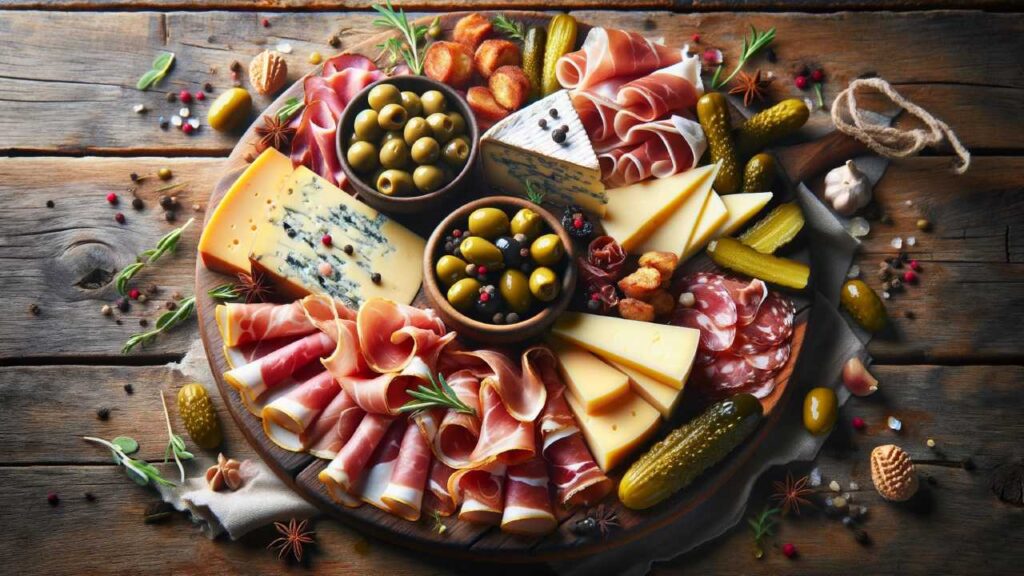
A perfect starter pairing with WhistlePig 10 Year might be a charcuterie board featuring an array of hard cheeses, smoked meats, and pickled vegetables.
The sharpness of aged cheddar or gouda can stand up to the whiskey’s boldness. At the same time, the smokiness of cured meats like prosciutto or smoked duck breast echoes the subtle smokiness from the oak barrels.
Add pickles or olives to introduce a tangy contrast that cleanses the palate between sips. The variety on a charcuterie board allows for multiple flavor interactions, making each bite and sip a new experience.
For Mains
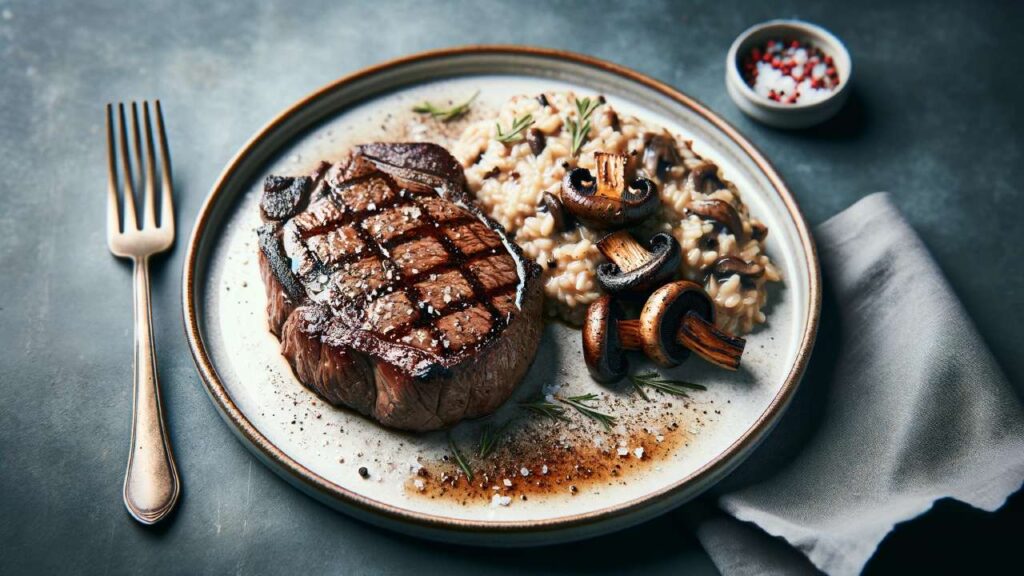
Moving on to the main course, consider robust and hearty dishes that can match the intensity of WhistlePig 10 Year. A perfectly grilled steak, seasoned simply with salt and pepper, allows the meat’s natural flavors to shine and complements the whiskey’s spicy and sweet notes.
The char from the grill and the juiciness of the beef creates a harmonious balance with the rye’s robust profile.
For a vegetarian option, a mushroom risotto, rich and creamy, can provide a similar depth of flavor. The mushrooms’ earthiness and the risotto’s creaminess make for a luxurious pairing that enhances the whiskey’s complexity.
For Desserts
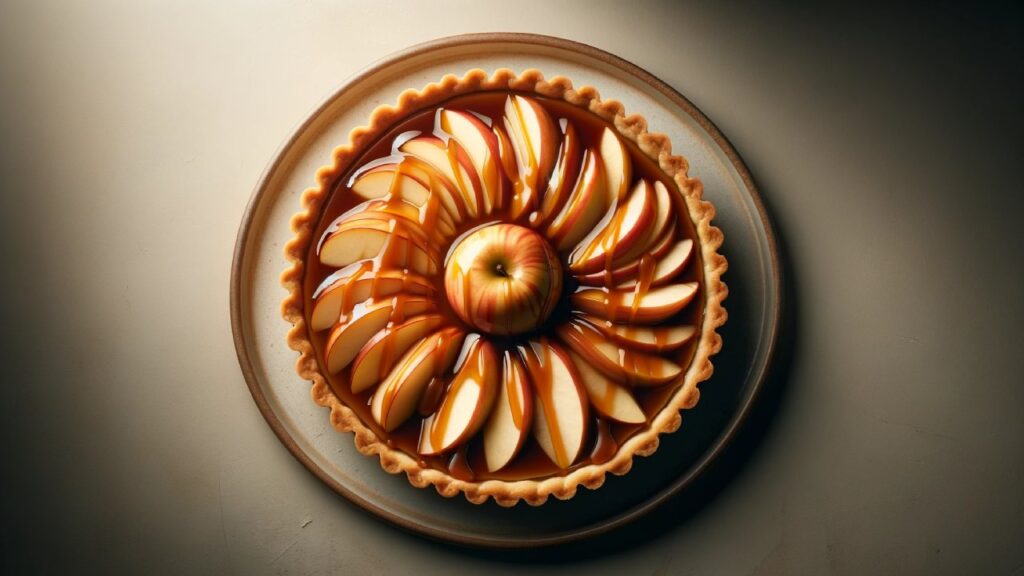
Regarding dessert, the spicy and sweet characteristics of WhistlePig 10 Year can beautifully accompany a range of sweet treats. A classic choice is dark chocolate, which can bring out the whiskey’s hidden notes of cocoa and deepen its inherent sweetness.
The bitterness of the chocolate contrasts with the whiskey’s spice, creating a delightful interplay of flavors.
For something a bit more adventurous, consider a caramel apple tart. The apples’ tartness, the caramel’s sweetness, and the buttery crust offer a delightful backdrop for the whiskey’s rich and spicy notes, making for an indulgent and satisfying end to the meal.
WhistlePig 10 Year vs 12 Year: WhistlePig 12 Year Food Pairings
WhistlePig 12 Year, with its nuanced and sophisticated profile, lends itself beautifully to various food pairings. Its refined balance of spice, sweetness, and oak from the extended aging process provides a rich backdrop for culinary exploration.
When pairing WhistlePig 12 Year with food, consider how the whiskey’s mature character can complement and enhance the flavors of your meal.
For Starters
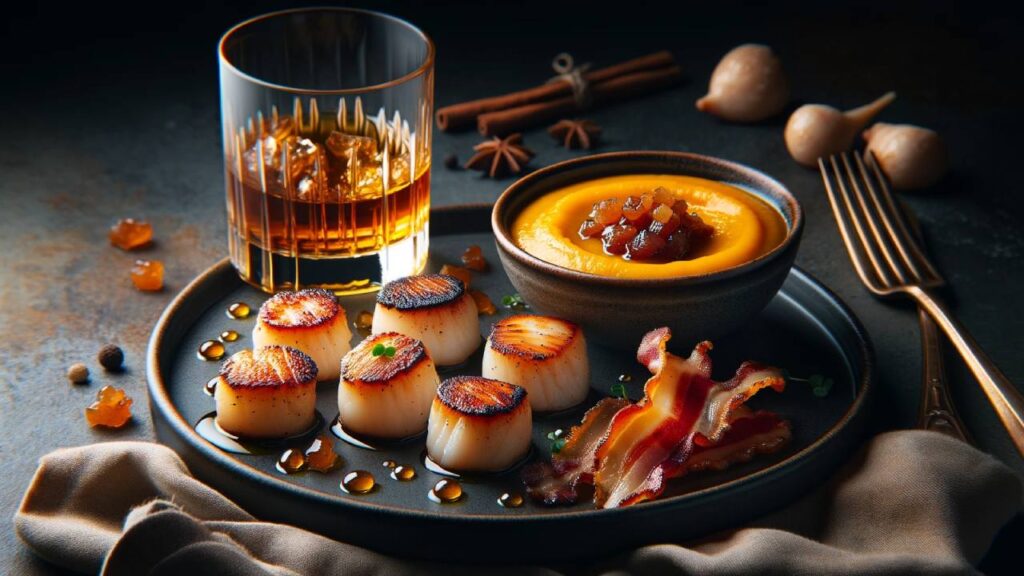
Begin with an appetizer that sets the stage for the refined elegance of WhistlePig 12 Year. A luxurious option might be seared scallops with a bacon jam. The sweetness and delicate texture of the scallops can beautifully contrast the whiskey’s spice. At the same time, the savory depth of the bacon jam mirrors its underlying richness.
Alternatively, a warm, spiced butternut squash soup can provide a comforting yet complex start. The soup’s natural sweetness and velvety texture make it an excellent companion for the whiskey, as the spices in the dish and the drink can echo and amplify each other, creating a harmonious beginning to the meal.
For Mains
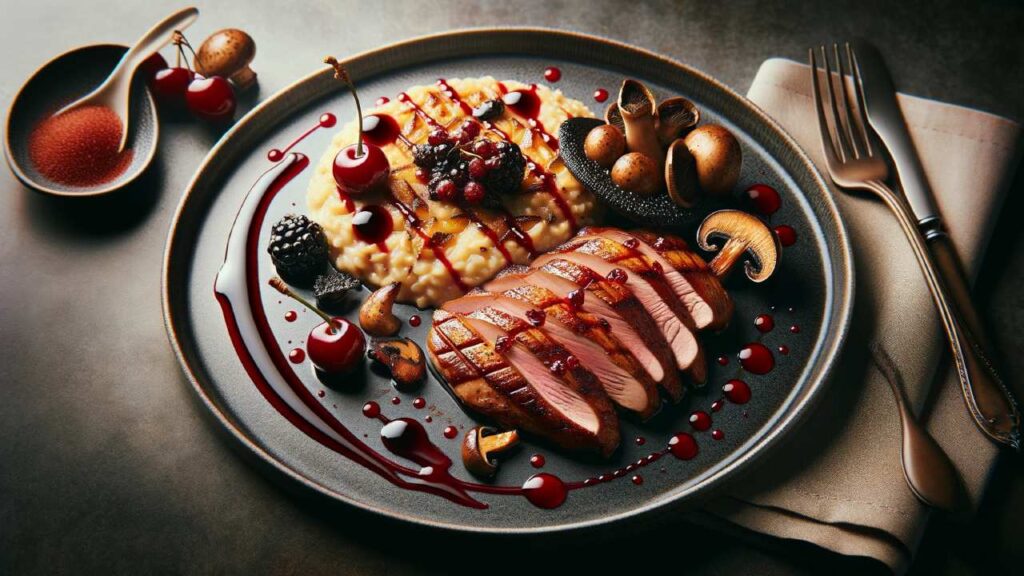
Consider dishes that speak to the WhistlePig 12 Year’s refined and well-rounded nature for the main course. A classic pairing might be a roasted duck breast with a cherry or berry reduction. The richness of the duck, with its crispy skin and tender meat, pairs wonderfully with the whiskey’s depth. The fruit reduction can bring out the whiskey’s subtle fruitiness and complement its sweetness.
For a vegetarian alternative, a wild mushroom and truffle risotto offers the necessary depth and earthiness to stand alongside the WhistlePig 12 Year. The truffles’ aroma and the mushrooms’ umami flavors create a luxurious dish that resonates with the whiskey’s complex character.
For Desserts
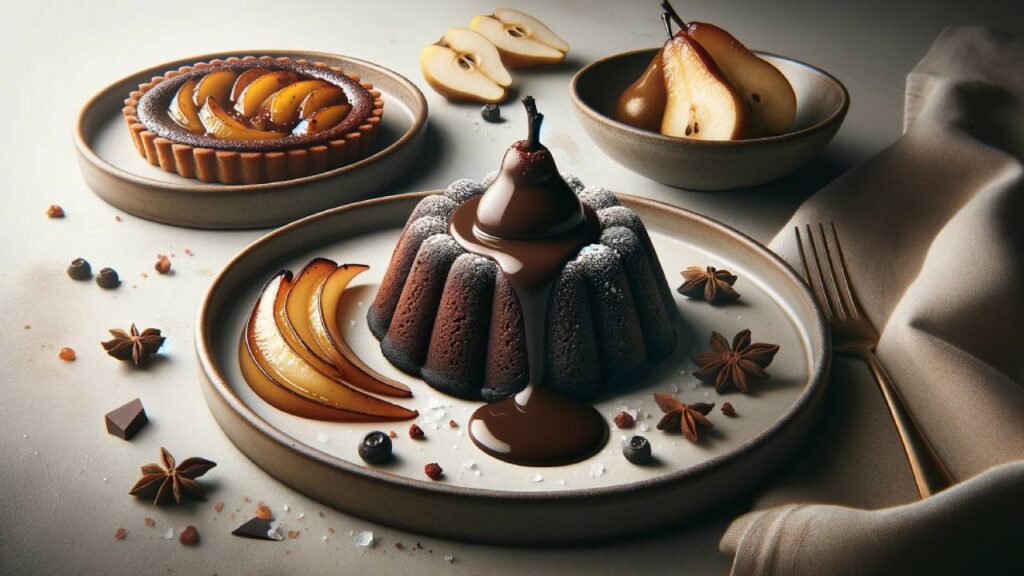
When it comes to dessert, WhistlePig 12 Year’s smooth and sophisticated profile can be paired with various sweet finishes. A rich, dark chocolate fondant or lava cake can be an excellent choice. The intense chocolate flavor, especially when paired with a hint of sea salt or chili, can bring out the whiskey’s spice and enhance its inherent richness.
If you prefer something lighter, consider a pear or apple tarte Tatin. The caramelized fruit, combined with sweetness and tartness, contrasts the whiskey’s warmth and spice, making for a balanced and indulgent end to your meal.
WhistlePig 10 Year vs 12 Year: Final Thoughts
We’re about to lay it out as we conclude our deep dive into WhistlePig’s 10 and 12-year offerings.
The upcoming section will distill our detailed tasting into a straightforward verdict.
So, grab your glass and ready your thoughts – we’re heading into the final reckoning where each whiskey’s mettle is scored and sorted.
| Best | WhistlePig 10-Year-Old | WhistlePig 12-Year-Old |
|---|---|---|
| Colour | 4/10 | 4/10 |
| Aroma/Nose | 4/10 | 6/10 |
| Mouthfeel | 5/10 | 5/10 |
| Taste/Palate | 5/10 | 5/10 |
| Finish | 6/10 | 7/10 |
| Total | 24 | 27 |
WhistlePig 10 Year vs 12 Year: Author’s Verdict
When it comes to the WhistlePig 12-year-old, it edges out its younger sibling in a few key areas. Starting with the color, both are scored the same, suggesting that the extra aging doesn’t necessarily translate to a deeper hue.
This can be a testament to the consistency of the whiskey-making process and the choice of casks used by WhistlePig.
The nose, however, is where the 12-year-old begins to pull ahead. It has a higher score, implying a more complex and evolved bouquet. With two more years in the barrel, it’s likely to present a broader range of aromatic subtleties, possibly offering richer wood and spice notes, and perhaps a hint of dark fruits or chocolate that the 10-year-old hasn’t quite developed.
The mouthfeel is rated equally, suggesting that despite the age difference, they share a similar viscosity and warmth on the palate. This is interesting as it indicates that the distiller has managed to maintain a consistent body and texture across expressions, which is no small feat.
Moving on to taste/palate, the two are again scored similarly. This could be somewhat surprising, as one might expect the older whiskey to have a more developed palate.
However, the extra aging of the 12-year-old does not necessarily equate to a better taste for every palate. It suggests that the 10-Year-Old holds its own in terms of flavor, delivering a satisfying and full rye experience.
Finally, the finish is where the 12-year-old distinguishes itself once more. A higher score in this category indicates a longer, perhaps more satisfying conclusion to the sip. This could be due to the mellowing effect of those additional years, which often rounds out any harsh edges and allows the flavors to linger pleasantly on the palate.
This doesn’t necessarily mean it’s the superior whiskey, but it does suggest a more complex and evolved profile. The 12-year-old’s aroma is richer, likely due to the additional aging, which can bring out more nuanced scents.
Regarding price, the WhistlePig 10-Year-Old is more accessible, and that’s a significant factor. It’s priced for enjoyment without too much deliberation, making it a great choice for gatherings where whiskey is to be appreciated but not fussed over. It’s the bottle you’d be more inclined to share generously, knowing it offers a solid rye experience without the premium cost.
The 12-year-old, on the other hand, comes at a price that reflects its age and the refinement that comes with it. This is the bottle you save for special occasions, not just because of its cost, but because its complexity is something you’ll want to savor without distraction. It’s an indulgence for moments that call for a little extra celebration.
In short, my ideas reflect individual attributes, but they don’t capture the whole picture. Value for money, the occasion for drinking, personal preference in flavor intensity, and the sheer enjoyment factor all play crucial roles. Both these whiskeys have their merits, and choosing between them isn’t just a matter of points:
It’s about what you’re looking for in your whiskey experience.


